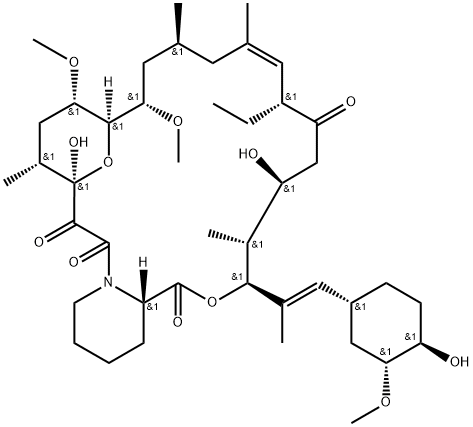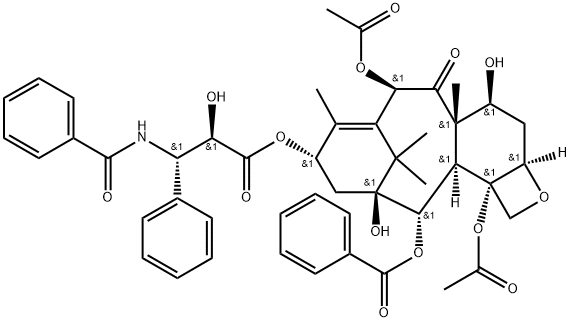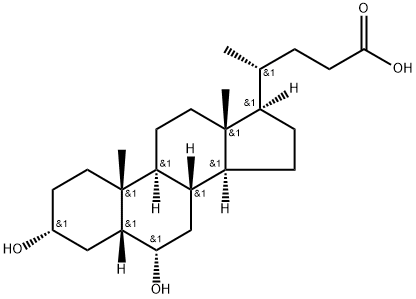Ascomycin
Synonym(s):Aag;CGTHBA;nitrogen permease regulator-like 3 (S. cerevisiae);
- CAS NO.:11011-38-4
- Empirical Formula: C43H69NO12
- Molecular Weight: 792.01
- MDL number: MFCD06198665
- EINECS: 658-052-0
- SAFETY DATA SHEET (SDS)
- Update Date: 2025-10-23 17:25:30

What is Ascomycin?
Description
Ascomycin (11011-38-4) is an analog of FK-506 (Cat.# 10-1103). Potent immunosuppressant1. Binds to FKBP122 and inhibits calcineurin and NFAT. Ascomycin displays anti-inflammatory effects in skin diseases3. Cell permeable and active in vivo.
The Uses of Ascomycin
A potent immunosuppressive agent and could be used as a potential therapeutic agent for autoimmune diseases.
General Description
An ethyl analog of FK506 with similar immunosuppressant properties. Acts by binding to immunophilins. Inhibits the synthesis of Th-1 and Th-2 type cytokines in target cells.
Biochem/physiol Actions
Product does not compete with ATP.
Enzyme inhibitor
This antifungal antibiotic (FW = 792.02 g/mol; CAS 104987-12-4; Solubility: 50 mM in DMSO), also known as FK520, isolated from Streptomyces hygroscopicus, is also a powerful immunosuppressant. Note that ascomycin is a structural analogue of tacrolimus (or FK506) and, as such, operates by a similar mechanism of action (See Tacrolimus). Ascomycin inhibits allogenic T-lymphocyte proliferation and calcineurin phosphatase activity.
References
1) Hatanaka et al. (1988), FR-900520 and FR-900523, novel immunosuppressants isolated from a Streptomyces. II. Fermentation, isolation and physio-chemical and biological characteristics; J. Antibiot. (Tokyo), 41 1592 2) Petros et al. (1991), NMR studies of an FK506 analogue [U-13C]ascomycin, bound to FKBP: conformation and regions of ascomycin involved in binding; J. Med. Chem., 34 2925 3) Mollison et al. (1999), A macrolactam inhibitor of T helper type 1 and T helper type 2 cytokine biosynthesis for topical treatment of inflammatory skin diseases; J. Invest. Dermatol., 112 729
Properties of Ascomycin
| Melting point: | 158 - 161°C |
| storage temp. | -20°C |
| solubility | Soluble in DMSO (up to 50 mg/ml), or in Ethanol (up to 50 mg/ml with warming). |
| form | White crystalline solid |
| color | White |
| Stability: | Stable for 2 years from date of purchase as supplied. Solutions in DMSO or ethanol may be stored at -20° for up to 3 months. |
Safety information for Ascomycin
Computed Descriptors for Ascomycin
New Products
4,4-Difluoropiperidine hydrochloride tert-butyl 9-methoxy-3-azaspiro[5.5]undecane-3-carboxylate Indole Methyl Resin N-Isopropylurea N,N-Dicyclohexylcarbodiimide(DCC) MELDRUMS ACID 5-METHYLISOXAZOLE-4-CARBOXYLIC ACID Magnessium Bis glycinate Zinc ascorbate 1-bromo-2-butyne 2-acetamidophenol 9(10H)-anthracenone Erythrosin B, 4-Piperidinopiperidine 2-((4-morpholinophenylamino) (methylthio) methylene) malononitrile 2,4-dihydroxybenzaldehyde 3-(4-morpholinophenylamino)-5-amino-1H-pyrazole-4-carbonitrile Methyl 2-methylquinoline-6-carboxylate 2,6-dichloro-4-nitropyridine 4-Bromo-2-chlorobenzonitrile 2-(benzylamino)acetic acid hydrochloride 4-(tert-Butoxycarbonylamino)but- 2-ynoic acid 3,4-dihydro-2H-benzo[b][1,4]dioxepine 1-Phenyl-1-cycloprppanecarboxylicacidRelated products of tetrahydrofuran








You may like
-
 Anti-Nprl3 antibody produced in goat CASView Details
Anti-Nprl3 antibody produced in goat CASView Details -
 3-(4-amino-1-oxoisoindolin-2-yl)-1-methylpiperidine-2,6-dione 98%View Details
3-(4-amino-1-oxoisoindolin-2-yl)-1-methylpiperidine-2,6-dione 98%View Details -
 614-19-7 98%View Details
614-19-7 98%View Details
614-19-7 -
 3112-85-4 Methyl phenyl sulfone 98%View Details
3112-85-4 Methyl phenyl sulfone 98%View Details
3112-85-4 -
 20677-73-0 (2,2-diethoxyethyl)methylamine 98%View Details
20677-73-0 (2,2-diethoxyethyl)methylamine 98%View Details
20677-73-0 -
 3-(4-(hydroxyamino)-1-oxoisoindolin-2-yl)piperidine-2,6-dione 98%View Details
3-(4-(hydroxyamino)-1-oxoisoindolin-2-yl)piperidine-2,6-dione 98%View Details -
 57381-49-4 2-bromo-4-chlorobenzonitrile 98%View Details
57381-49-4 2-bromo-4-chlorobenzonitrile 98%View Details
57381-49-4 -
 4,6-dichloropyrimidine-5-carbaldehyde 98%View Details
4,6-dichloropyrimidine-5-carbaldehyde 98%View Details
5305-40-8
